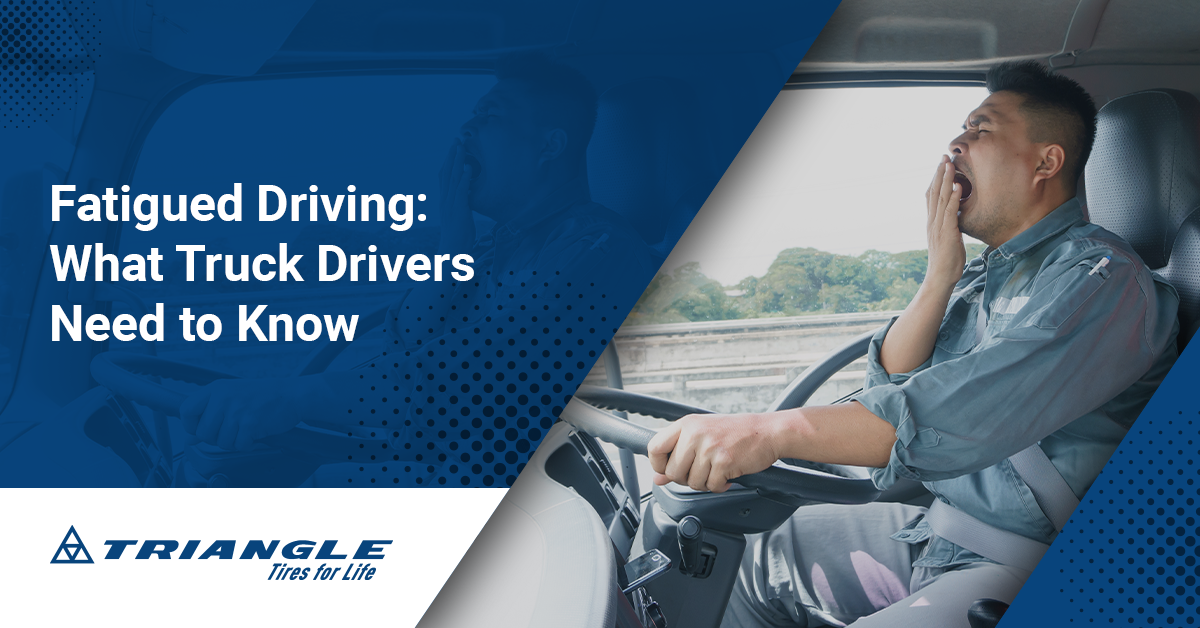
Truck driving might seem like a straightforward job. However, it isn’t as easy as it sounds, given that it’s taxing for the driver’s body and mind.
Overexertion often leads to fatigued driving, which is extremely dangerous for you and others sharing the road. In fact, the National Sleep Foundation reports that 6,400 road fatalities occur annually in the US because of drowsy driving, with 71,000 injuries and $12.5 million in financial losses.
Given these concerning figures, reducing the risk of fatigued driving is crucial, especially among truck drivers like yourself, who often overwork to meet deadlines. Let’s delve into the symptoms of driving while tired and what you can do to minimize its chances of happening.
What is Fatigued Driving?
Fatigued driving refers to operating a vehicle when exhausted, impeding your ability to drive safely. Many jurisdictions consider it impaired driving, like driving under the influence, giving you an idea regarding the problem’s severity.
Knowing when you’re feeling drowsy on the road can help you prevent accidents. Here are some telltale signs of driving fatigue.
1. Frequent blinking and yawning
Frequent yawning is one of the first things you’ll notice when you’ve reached a certain level of exhaustion, followed by frequent blinking to fight sleep. While these efforts may be successful initially, you’ll soon find yourself drifting off and falling asleep, turning you and your truck into a major road hazard.
2. Inability to concentrate
Studies show that inadequate sleep makes staying sharp on the road challenging, impacting your alertness and focus. Therefore, you won’t be able to respond promptly to road signs and cues from other drivers, like car horns, hazard lights, and turn signals. Even more concerning is that defensive driving will be more challenging, making you more vulnerable to accidents.
3. Heavy eyelids
As you become increasingly exhausted, it becomes harder to keep your eyes open. These moments might last for a couple of seconds. However, being unconscious at any given time when barreling down a highway at 100 kilometers per hour can be a fatal mistake. You might fail to anticipate signs, debris, barriers, and drivers merging into your lane, causing you to crash into them.
4. Delayed reaction time
Per studies, sleep deprivation hinders your ability to respond quickly to stimuli. It means you won’t be able to drive defensively; if a vehicle suddenly drifts into your lane, you have a low chance of avoiding it on time, leading to potential accidents. At the same time, you might miss traffic lights, signs, and other road cues, posing a risk for you and those you share the road with.
5. Weaving in and out of proper lanes
Driving straight while staying in your lane is more challenging due to the disorientation that sleepiness can cause. You might wander outside the lines and hit other vehicles, escalating to pile-ups. Likewise, you might veer off and crash into trees, buildings, barriers, or pedestrians.
5 Best Practices to Avoid Fatigued Driving
Preventing drowsiness from overcoming you while driving is crucial to avoid causing accidents and harming yourself and others. Here are some practices you can observe.
1. Eat light and stay hydrated
Heavy meals, especially those rich in carbs and protein, can make you sleepy. So, avoid eating a lot before an extended trip. If you’re hungry, eat light meals and stay hydrated to avoid falling into a food-induced coma when behind the wheel.
2. Listen to upbeat music or podcasts
Research shows that music tempo significantly affects sleepiness and alertness: slow tunes increase your fatigue and drowsiness, while high-tempo music keeps you alert. In other words, playing upbeat music is better than other alternatives. Similarly, podcasts, talk shows, and other radio programs can keep you engaged, reducing your chances of falling asleep.
3. Take short breaks frequently
Monotony and constant alertness in extended drives may cause fatigue, especially when on a familiar journey. Consider taking frequent breaks—visit rest stops, get a quick meal, or buy snacks.
You can also consider doing something physical like stretching to reinvigorate your body. Meanwhile, you can refresh your mind by getting hydrated or taking naps to recover from exhaustion and sleepiness.
4. Get quality sleep before the trip
Of course, one of the best solutions to sleepiness while driving is adequate rest before your trip. Get a good night’s sleep before your journey. Healthy adults must get at least seven hours of rest to feel energized the following day. Be careful not to oversleep, as you may suffer from daytime grogginess, headaches, and tiredness.
5. Plan your stops and rotate drivers
Limiting your time on the wheel is an excellent way to reduce the likelihood of drowsy driving. Consider setting up a buddy system; swap with another driver every few hours and rest to recover from fatigue. Aside from being a replacement, that person on board can engage you in conversations and quickly keep you from getting tired.
Stay Awake on the Road
Fatigued driving undermines your ability to be a responsible and safe truck driver. It’s best to observe your condition on the wheel. If you’re experiencing the indications we’ve discussed, snooze off at the nearest rest stop ASAP. Remember these preventive tips to ensure the safety, security, and well-being of yourself and others.
Make your drives even safer with quality tires from Triangle Tires. Our extensive selection—from passenger car tires to those for heavy equipment vehicles—is available for delivery at an affordable price so that you won’t have any worries during long journeys.
Browse our tire catalog, or contact us for your tire needs.